While finding rings and other jewelry is fairly common in metal detecting, the chance that any will have a value beyond cheap costume jewelry is fairly slim. Most of these were found in Pennsylvania, but when I first started detecting I occasionally went to the beach during the off season and a few of these finds are beach bling. A couple of these rings have already been mentioned in previous posts, including a class ring that I spent hours trying to return, and a silver 1893 Chicago Exposition ring.

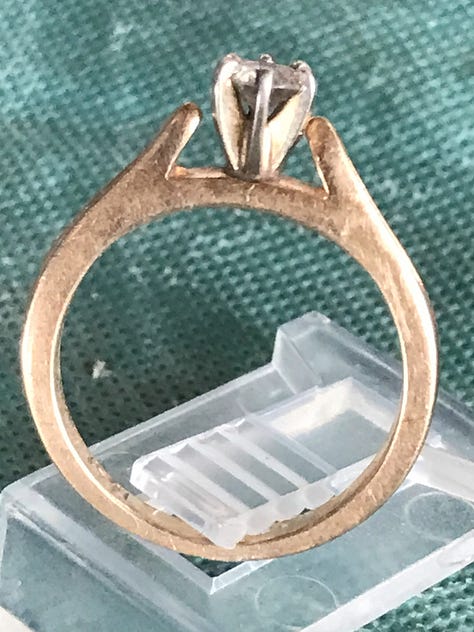
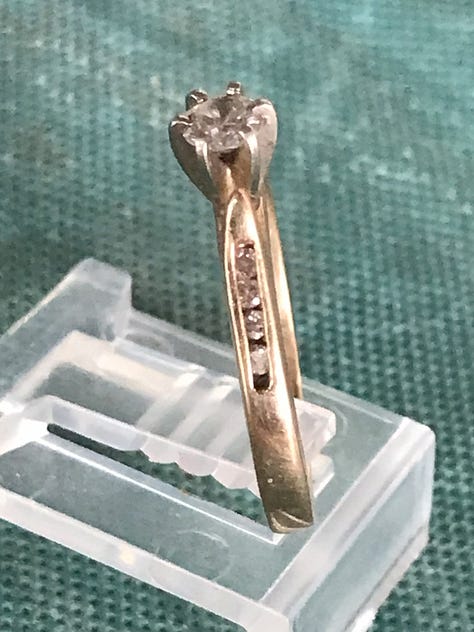
The first ring in today’s post is a 14 K gold diamond engagement ring. I have a diamond tester, and this is the only ring I’ve found that tested positive for diamonds, however I have a couple other rings that may have diamond chips and are very difficult to test with the tools I have. This ring was found at a local park, but not in the usual hunting locations such as around a picnic table or in a swimming area. It was found instead about 25 feet off a hiking trail, so I can only suppose that the owner and her fiancé split up and she gave it a pitch. I even went to the park office to see if anybody had reported losing a ring, but they had no such reports. There’s no way to date when the ring was lost because gold and diamonds both hold up really well in the environment; it might even have been 50 years ago. Even with initials it would be difficult to track down the owner.
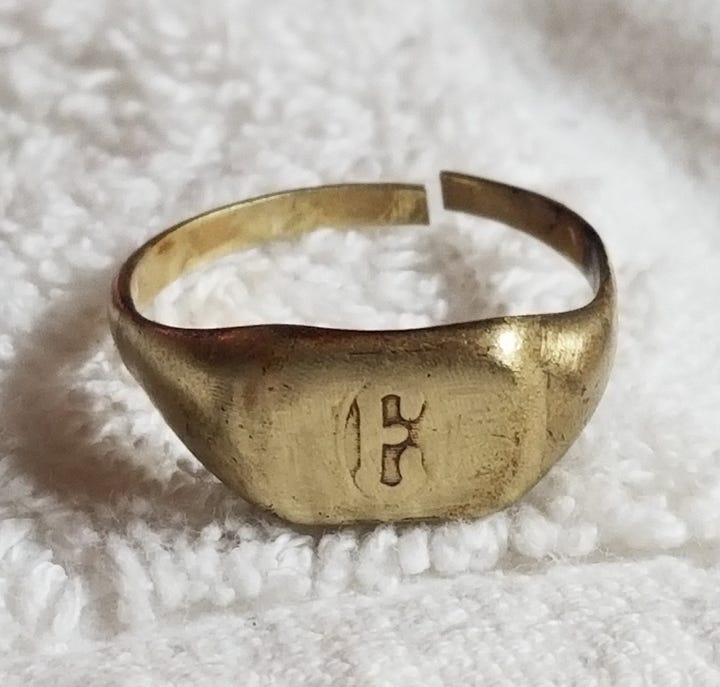
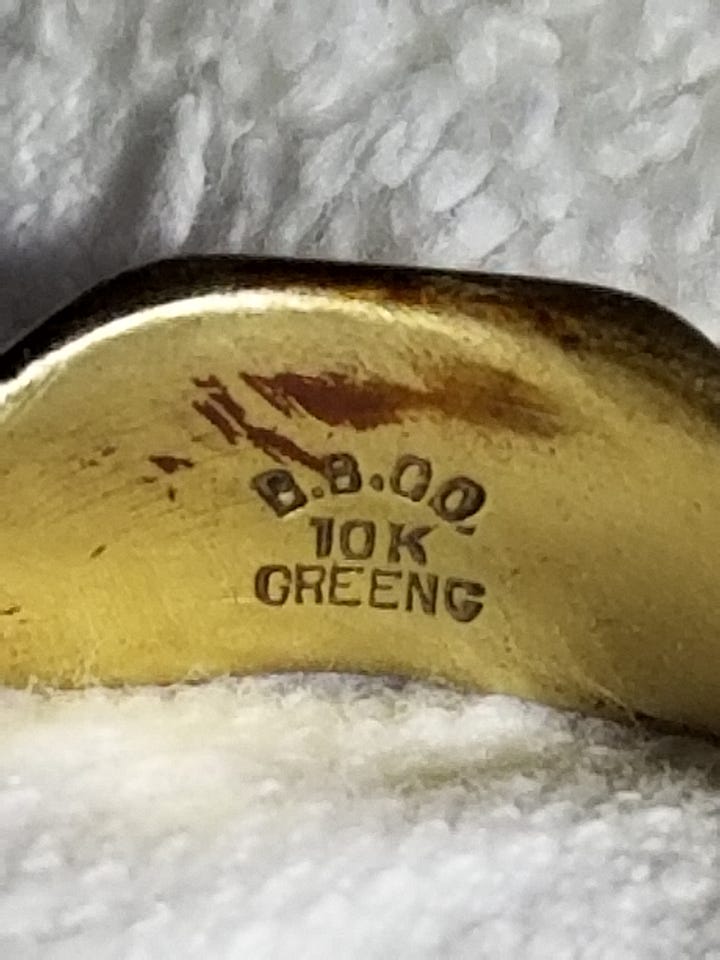
The next ring is a 10K gold men’s ring embossed with the initial E that was found in a swimming hole. Inside the band is the word “CREENG” or “GREENG” or possibly “OREENG”. Any variation is difficult to look up because the internet wants to change the search term to green or orange.
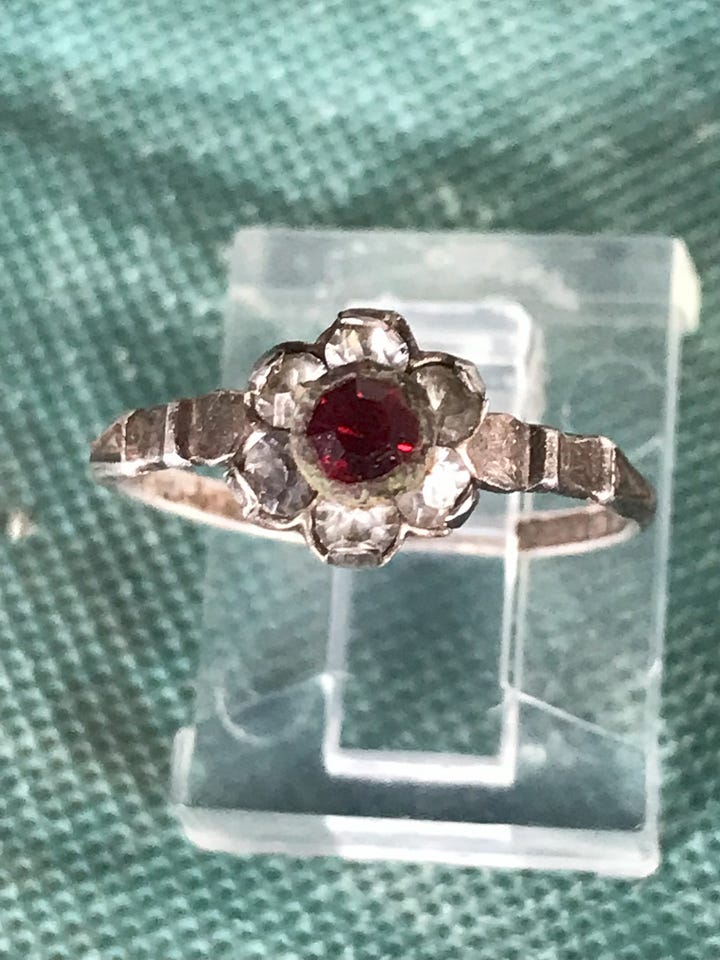
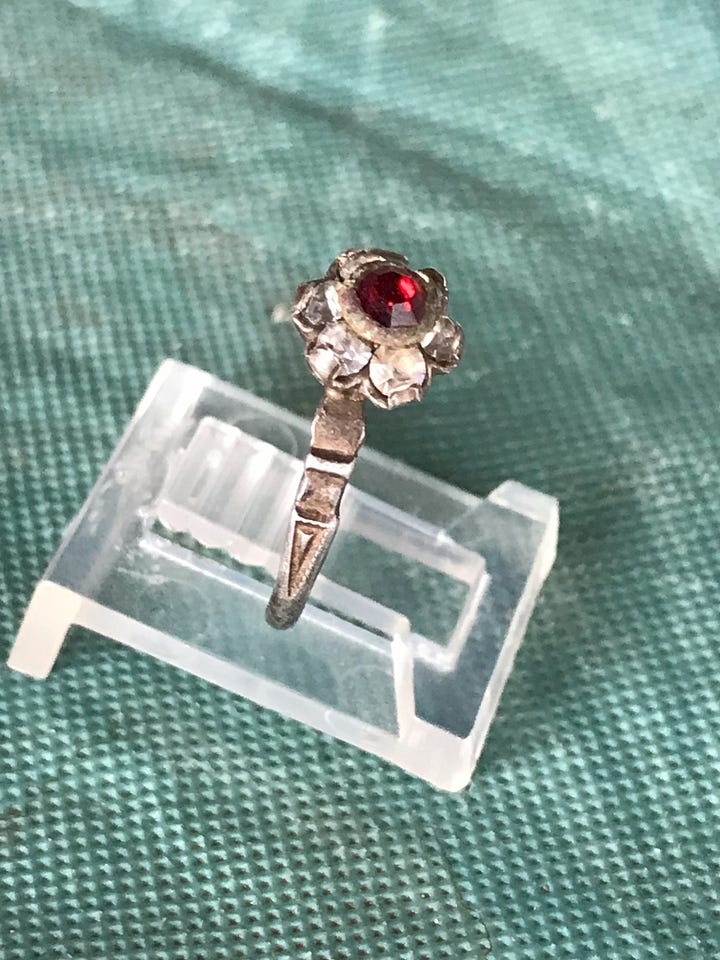
This ring was found just two weeks ago, and a quick trip to the jeweler revealed that the red stone is a garnet. The little white stones are probably glass. I believe this ring was lost in the 1940’s, and cubic zirconia wasn’t widely used at that point. I was searching an old summer camp area that closed in the 1940’s and is pretty overgrown now. The band is stamped “Sterling”.
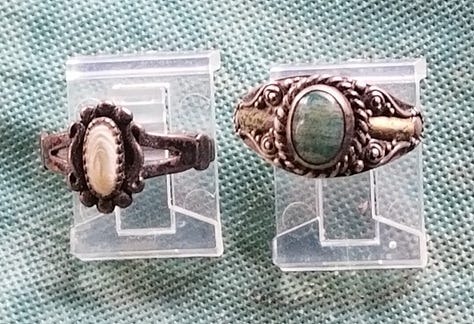
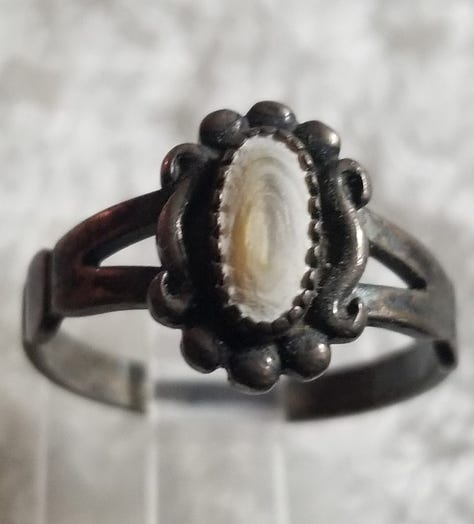
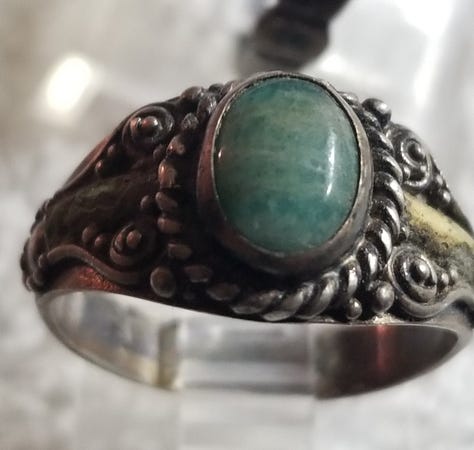
These two are among my favorites. The one with the whitish colored stone was found along a hiking trail and is possibly a mother-of-pearl or abalone in a sterling setting. The one with the green stone (possibly jade or jadeite, definitely sterling) was probably lost around or shortly after the turn of the 20th century. A 1902 Indian head penny was found nearby, which isn’t proof, but helps date the site somewhat. Leave a comment below if you know what kind of stones these are.
This ring is probably a poor woman’s wedding band. It’s 10K gold, and was found at an old homesite that was on an 1872 map, but was torn down in the 1960’s, so it could have dated from anywhere in that range. Since it’s 10K, it hasn’t held up quite as nice as the higher quality rings, but it’s still a nice find.
Tungsten carbide rings are a relatively recent phenomena, first introduced in 1962, but not really popular until the last decade. This ring was found at the beach, and very likely hadn’t been lost long. Other than the “Tungsten Carbide” stamp, there are no other identifying marks inside. Rings made with tungsten carbide are scratch-resistant, tarnish-resistant, virtually indestructible, hypoallergenic, and will last a lifetime in the polished form in which they were purchased. Due to its hardness, rings made with this material can crack if dropped on a hard surface, and they cannot be resized.
Finding jewelry is always fun, but the really good stuff is pretty rare, making those finds really exciting.







Really interesting post! Nice bling!